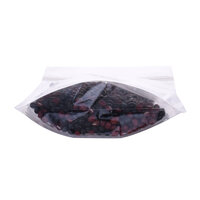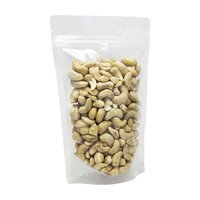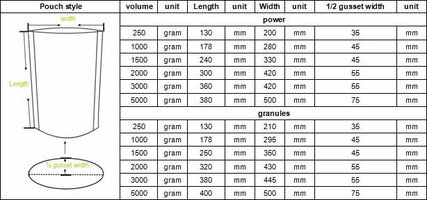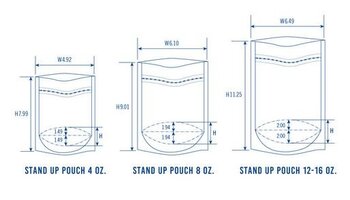Hello, I'm trying to figure out the volume of a stand up pouch for product packaging. All the capacity information that vendors have seems to be for the weight of coffee beans. That's not helpful for me; I need to know how many cups pouches of different sizes will hold so that I can decide what custom size to request based on the volume of my food product.
It seems like this would be a very complicated problem, but if anyone can help me figure it out, I'd appreciate it very much.
You'd probably seen this type of pouch on shelves in the store. They have the following characteristics:
Can anyone help create a formula into which I can insert the three dimensions (width x height x bottom gusset) and the outcome is the volume? I'm not a math wiz, so the better you can simplify how to use the formula, the better. Even if it's an approximate volume, that would be helpful. It would be amazing if this could be in the form of a spreadsheet formula.
Thanks in advance for any help you can provide!
It seems like this would be a very complicated problem, but if anyone can help me figure it out, I'd appreciate it very much.
You'd probably seen this type of pouch on shelves in the store. They have the following characteristics:
- bottom gusset, making the bottom flare out to allow the pouch to stand up
- zipper top with no gusset, so the top if flat when closed
- When full and closed, the width tapers in from the bottom gusset to the top closure
- When full and closed, the depth taper in from the middle to each side
Can anyone help create a formula into which I can insert the three dimensions (width x height x bottom gusset) and the outcome is the volume? I'm not a math wiz, so the better you can simplify how to use the formula, the better. Even if it's an approximate volume, that would be helpful. It would be amazing if this could be in the form of a spreadsheet formula.
Thanks in advance for any help you can provide!




